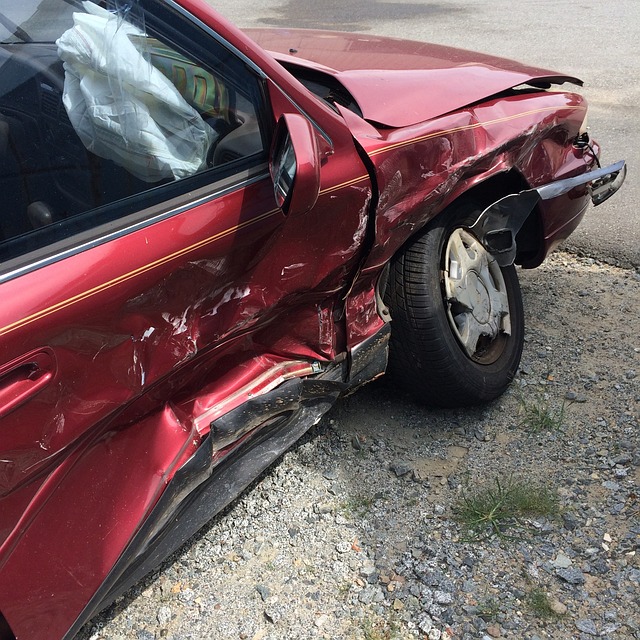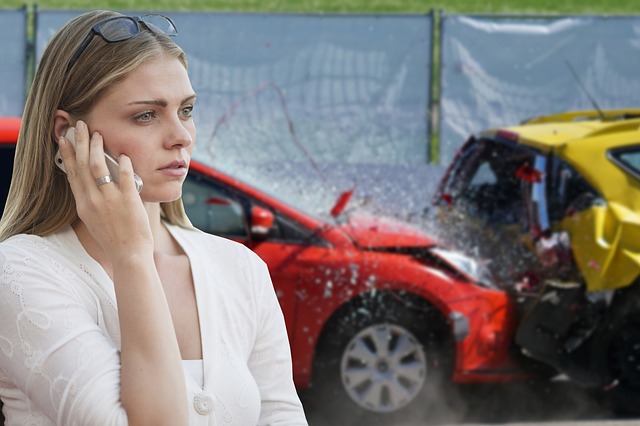Collision coverage, an advanced insurance solution, offers comprehensive protection against a wide range of road hazards, from traditional accidents to natural disasters and vandalism. It includes not only vehicle repair/replacement but also medical bills for injuries and liability protection. Full-range collision protection provides peace of mind by covering various incident types, rental car reimbursement, towing services, and loss of use compensation. While excluding certain events like drunk driving or willful damage, careful reading of policies ensures tailored coverage for individual needs. This type of coverage is especially valuable in urban areas or high-risk environments, securing vehicles against diverse scenarios and financial burdens.
Looking for complete peace of mind behind the wheel? Explore full-range collision protection, your ultimate shield against unexpected automotive mishaps. This comprehensive guide unravels everything you need to know. From understanding the basics and its importance to navigating policy components and benefits, we demystify this crucial coverage. We’ll also shed light on common exclusions, help you compare policies, and share real-world scenarios where it excels. Discover why full-range collision insurance is a wise investment for your vehicle’s protection.
Understanding Full-Range Collision Protection: A Comprehensive Overview

Full-Range Collision Protection is a comprehensive insurance solution designed to safeguard drivers and their vehicles from a wide array of potential hazards on the road. Unlike traditional collision coverage that primarily focuses on direct collisions with other objects or vehicles, this advanced protection scheme encompasses a broader spectrum of risks. From accidental mishaps to natural disasters, it aims to provide all-encompassing security.
This type of coverage goes beyond conventional limits, offering protection against various scenarios such as rolling over, colliding with fixed objects, and even vandalism. It also includes less conventional risks like animal strikes and weather-related incidents. By understanding the full range of possible collisions, drivers can make informed decisions when selecting their insurance plans, ensuring they are adequately protected in every situation.
Why Is Full-Range Collision Coverage Important for Your Vehicle?

Full-range collision coverage is an essential aspect of vehicle ownership, offering comprehensive protection against unexpected accidents and their financial repercussions. In today’s world, where vehicles are involved in numerous collisions each day, this type of insurance acts as a shield, safeguarding your investment and providing peace of mind. Not only does it cover the cost of repairing or replacing your vehicle after a collision, but it also takes care of associated expenses like medical bills for injuries sustained by you or your passengers.
Beyond financial protection, full-range collision coverage includes liability protection, which is crucial in case you are at fault during an accident. It helps pay for damage to other people’s vehicles and their medical bills, protecting you from potential legal issues and substantial financial burdens. This type of coverage ensures that you’re prepared for any scenario on the road, offering a safety net that can be invaluable in the event of a collision.
Components of a Comprehensive Collision Coverage Policy

A full-range collision protection policy, often referred to as comprehensive collision coverage, is designed to offer drivers broad protection against various types of vehicle damage. This type of insurance policy typically includes several key components that work together to ensure thorough protection. Firstly, it covers direct physical damage to your vehicle from accidents, natural disasters like floods or hailstorms, and even theft or vandalism. Secondly, it provides liability coverage, shielding you from financial responsibility for injuries or property damage caused to others in an accident, up to specified limits.
In addition to these core elements, comprehensive collision coverage may also include perks such as rental car reimbursement during repairs, towing services, and sometimes even loss of use coverage, which compensates you for the inconvenience of being without your vehicle while it’s being repaired. These features collectively make comprehensive collision coverage a robust option for drivers seeking peace of mind on the road.
Benefits of Opting for Wide-Ranging Collision Insurance

Opting for full-range collision protection, or wide-ranging collision insurance, offers numerous advantages that can significantly impact your peace of mind and financial situation in the event of an accident. This comprehensive coverage goes beyond typical collision insurance by addressing a broader spectrum of potential incidents, including not only head-on collisions but also side impacts, rear-end crashes, and even rolling over. Such comprehensive protection ensures that you’re shielded from substantial repair costs, often escalating due to the complex nature of modern vehicle designs.
Moreover, wide-ranging collision insurance can cover additional expenses like rental cars while your vehicle is being repaired, as well as medical payments if anyone involved in the accident requires treatment. This multifaceted coverage acts as a shield against unexpected financial burdens, providing you with the freedom to focus on recovery and getting back on the road safely rather than worrying about monetary constraints.
Common Exclusions and Considerations in Collision Coverage

Collision coverage, while comprehensive, does have its limitations and common exclusions. Many policies won’t cover certain types of accidents, such as those caused by driving under the influence or willful damage. Additionally, some policies may not include protection for specialty items left in an open vehicle or for losses that occur outside specific geographical boundaries.
It’s crucial to read the fine print carefully and understand what’s excluded from your collision coverage. This ensures you’re protected against unexpected events like accidents with uninsured drivers, natural disasters, or damage caused by acts of vandalism. By being aware of these exclusions, you can make informed decisions when choosing a policy that aligns best with your needs.
Comparing Policies: How to Choose the Best Full-Range Collision Protection

When comparing full-range collision protection policies, it’s crucial to understand what each offers in terms of collision coverage. Look beyond the basics and assess the policy’s ability to protect against a wide range of incidents, from minor fender benders to severe accidents. Some policies may include comprehensive coverage, which not only covers collisions but also damages from natural disasters, theft, or vandalism.
Consider additional benefits like rental car coverage during repairs, roadside assistance, and medical payments for injuries sustained in an accident. Evaluate deductibles and understand what’s covered and what’s excluded. A policy that offers broader collision coverage with reasonable deductibles could prove more cost-effective in the long run, ensuring you’re protected against a variety of potential incidents.
Real-World Scenarios: When Does Full-Range Collision Insurance Kick In?

In real-world scenarios, full-range collision protection kicks in during a variety of incidents. It is designed to cover vehicles against damage caused by both minor fender benders and severe accidents. This comprehensive coverage includes situations like rear-end collisions, side impact crashes, and even head-on encounters.
When you have full-range collision insurance, your policy will typically cover the cost of repairing or replacing your vehicle if it’s damaged in these events. This can include not just the visible, external damage but also internal components affected by the collision. Collision coverage is particularly valuable for drivers who frequently encounter congested urban areas or face higher risks of accidents due to their driving environment.
Frequently Asked Questions About Comprehensive Collision Coverage

Collision Coverage FAQs
What is comprehensive collision coverage? This type of auto insurance provides all-encompassing protection against a wide range of vehicle damages, including those that occur in non-accident situations like natural disasters or vandalism. It goes beyond liability coverage, which primarily shields you from financial burden when causing damage to others’ property or injuries.
How does collision coverage work? When you have collision coverage and your car gets damaged, the insurance company will typically pay for repairs or, if the vehicle is deemed a total loss, provide reimbursement for its value. Deductibles apply, meaning policyholders must often cover a set amount of repair costs before insurance steps in. Understanding these details can help demystify collision coverage and ensure drivers make informed decisions about their protection.
